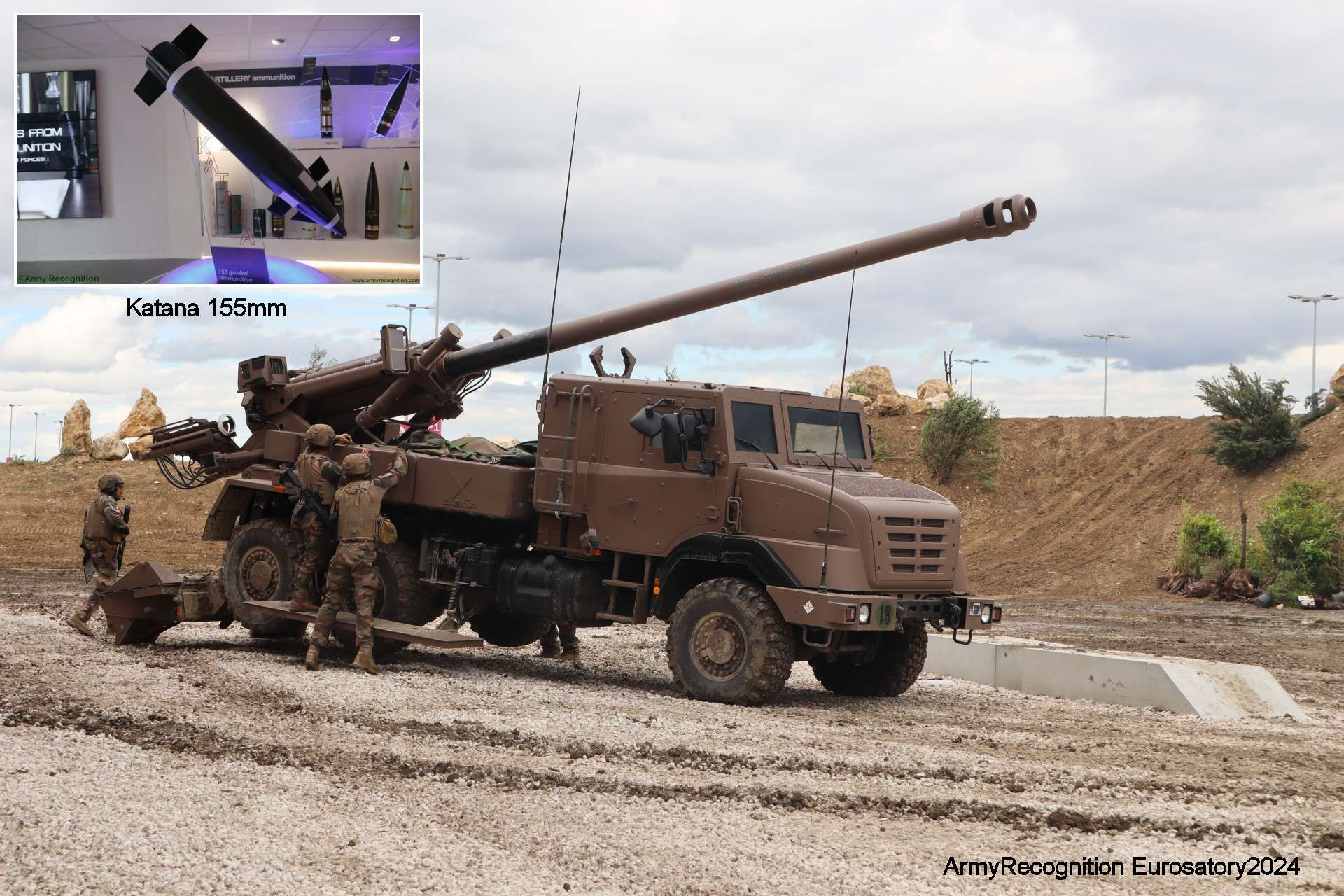Breaking News
France Develops High-Precision Guided Katana 155mm Shell to Enhance Artillery Capabilities by 2026.
France is poised to enhance its artillery capabilities with the development of Katana, a high-precision guided 155 mm shell. Led by KNDS France, the project aims to produce a shell capable of striking high-value targets such as artillery systems, radars, or command posts with pinpoint accuracy. Currently at Technology Readiness Level 6, Katana is expected to hit the market by 2026, after extensive testing and development phases, including adjustments due to pandemic-related delays and supply chain issues.
Follow Army Recognition on Google News at this link

KNDS High-Precision Guided Katana 155mm Shell (Picture source: KNDS and Army Recognition)
Katana's design focuses on precision, reducing the number of munitions needed to neutralize enemy positions. This not only conserves ammunition but also minimizes wear on the cannon, lightens the logistical load, and crucially, limits collateral damage—particularly important in urban combat scenarios. To achieve such accuracy, two main approaches are employed. The first involves enhancing target acquisition capabilities through advanced algorithms and computer vision technologies that can interpret video feeds from drones. The second approach relies on the guided nature of the munition itself, utilizing a mix of GNSS signals, inertial measurement units, and an optional semi-active laser rangefinder to achieve meter-level accuracy.
The guided shell has undergone rigorous testing, including wind tunnel experiments for guidance functionality and ballistic behavior, followed by controlled firing trials to assess its maneuverability and control surface functionality. Initially slated for release in 2023, the timeline was pushed back due to unforeseen challenges, including the need for enhanced resistance to electronic jamming, which could disrupt GNSS signal reception.
KNDS France has highlighted Katana's modular design, which allows for the integration of new technologies as they become available. This feature is particularly valuable in environments where GNSS signals may be compromised. With support from the French Directorate General of Armaments (DGA), the munition's resistance to electronic jamming is currently being evaluated, promising a munition that maintains functionality in contested environments.
Katana is equipped with a multi-mode fuse, allowing for varied terminal effects depending on the characteristics and protection levels of the target. The munition can be fired at full charge from a 52-caliber 155 mm cannon, like the one mounted on the CAESAR artillery system, reaching maximum range and ensuring effectiveness across diverse combat scenarios.
This development coincides with the increased use of CAESAR cannons on various fronts, including recent acquisitions by Armenia, highlighting the global demand for mobile and precise artillery systems. The Mk 2 version of the CAESAR cannon, noted for its 60-kilometer range and less than 10-meter accuracy, aligns with modern warfare demands where mobility and precision are crucial for survival and effectiveness.
Furthermore, Katana's ability to accommodate local components during production transfers enhances its export potential, ensuring that this advanced munition can meet the varied needs of international markets. With its combination of advanced targeting technology, modular design, and resistance to adverse conditions, Katana represents a significant leap forward in artillery munition technology.



















